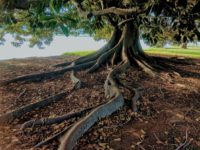4 Tips for Maintaining the Health of Your Trees

Trees are a vital part of the environment and outdoor space as they clean the air, provide oxygen and habitats for wildlife, and beautify the landscape. If your residence or building is surrounded by trees, you want to do everything possible to ensure the trees remain robust and healthy. While you know the basics such as watering and pruning, there is more to learn about tree health and maintenance.
Here are a few vital tips for maintaining the health of the trees on your property.
1. Be Mindful When Planning Nearby Construction
Did you know that a tree’s roots will extend way beyond its branches? It may be easy to believe that construction work will not affect a tree if it is not directly near the truck, but this may not always be the case. Because the roots of the tree are extensive, you need to protect your trees during construction; otherwise, roots may be inadvertently cut and destroyed.
One way to protect your trees is by installing fences around root zones. Doing so may prevent heavy construction equipment from infiltrating the tree roots. For more information on how to protect your trees during construction, consult a tree expert or arborist.
2. Routinely Mulch Around Tree Bases
Tree mulch in the form of wood chips, pine needles, shredded pieces of tree bark, or straw will help keep your trees healthy. You may also obtain biodegradable tree mulch from your local garden store. Be sure to lay down a few inches of mulch around the base of each tree.
The mulch you lay down helps retain important moisture that your trees need for optimal health. Mulch also acts as a natural insulator against the elements. In addition, mulching will guard your trees from lawn mower and weedwacker damage.
3. Feed Your Trees
Your trees need nutrition to keep them in peak health and free from disease. Fertilizing your trees helps them stay healthy. Experts recommend you fertilize your trees in the fall before cold weather sets in. If your trees seem to be growing slowly or the leaves lack a rich and vibrant color, they probably need a good fertilizer.
The fertilizer you use should contain nitrogen, phosphorus, and potassium. However, you should also determine which nutrients each particular species of tree requires. Look for a solution that releases the nutrients slowly. Also, follow the package directions carefully or consult your tree specialist.
4. Recognize Signs of Disease
Be sure to keep a watchful eye over your trees so you can recognize signs of disease before the condition becomes serious. You may find information on tree disease and what to look out for by researching online or investing in a good book on tree health.
To help you spot an unhealthy tree that has been affected by disease, note the following questions:
- Is the foliage twisted or torn?
- Are leaves discolored or covered in spots?
- Do you notice a white, cotton-like substance adhering to the trunk or branches?
Any of the above may be signs of a tree that is affected by disease. In some cases, the damage may have been caused by insect infestation. While examining the leaves and branches, don’t forget to have a close look at the tree bark. If the bark is peeling away, or there are holes in the trunk, insects or pests may be eating away at it.
In any case, if you suspect your trees are unhealthy or diseased, consult a professional tree expert. Also, if you have general tree care concerns or require services, contact our team of experienced arborists at Garden Services for assistance.
